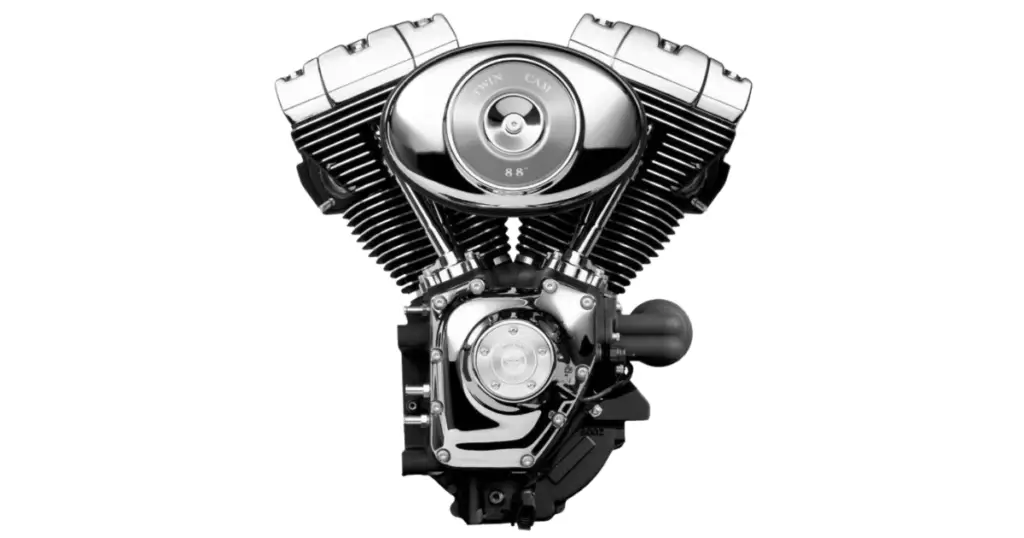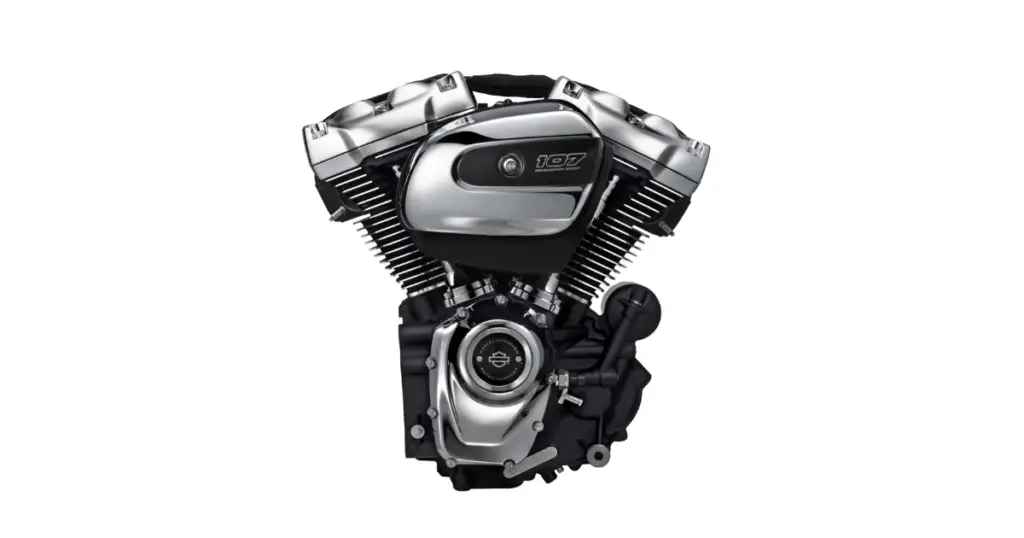The arena of motorcycle performance is eternally vibrant, and a critical juncture often faced by Harley-Davidson loyalists is the decision between harnessing the established capability of an 88 cubic inch (ci) engine versus elevating to the prowess of a 107 ci powerhouse. When debating the Harley 88 vs 107 comparison, riders are challenged to consider a variety of elements—horsepower aspirations, torque ambitions, fiscal prudence, and the overarching component of reliability. In the heartland of Missouri, the discourse flourishes, as one rider with an ’06 Street Bob grapples with the prospect of upgrading, seeking a monumental leap past the 110 hp and 120 torque benchmarks.
Peer guidance suggests a calculated approach, often beginning with a 103″ engine as a foundation and advancing through modifications to reach that coveted 107″ stratum. Established wisdom within Harley circles underlines the necessity of component compatibility—both for mechanical harmony and cost-effectiveness—serving as a reminder that not all paths lead to the same destination when considering the harley davidson 88 vs 107 differences. A journey of performance enhancement, whether it veers towards a 98″ kit or propels forward to an S&S 124″ Hot Setup, is punctuated with critical decisions regarding crankshaft changes, case splitting for grander pistons, and the potential retooling of the clutch to withstand the newfound vigor of a transformed engine.
Key Takeaways
- In-depth analysis of performance factors in the harley 88 and 107 comparison.
- Strategies for upgrading from an 88 ci to a 107 ci engine, detailing incremental steps.
- Influential community insights on balancing and reinforcing motorcycle components.
- Consideration of alternatives and potential savings with smaller displacement kits.
- Emphasis on matching engine components for optimal performance and synergy.
- Cost-assessment of full upgrades versus purchasing high-performance kits like the S&S 124″.
- Recommendation against mixing certain crankshaft variations from different era engines.
Harley 88 vs 107: Understanding the Key Differences


Harley-Davidson riders who seek a boost in performance frequently consider upgrading from an 88 cubic inch engine to a more robust 107 cubic inch powerplant. The journey from the stock Harley 88 to a 107 involves critical enhancements to various engine components. This comparison aims to demystify the intricacies involved in the transition, focusing particularly on engine specs, performance benchmarks, and installation nuances that together signify a leap in motorcycle potency.
For those initiating this formidable transformation, most notably observed in models like the 2006 Dyna Wide Glide, specific procedures are cited. A set of performance-oriented upgrades inclusive of a balanced crankshaft, race-grade connecting rods, and a welded crank pin are paramount. Technicians often underscore the importance of fine-tuning the entire assembly with a reputable big bore kit promising greater displacement and power.
Nothing beats the rush of added torque that comes with a larger displacement. When you throttle on a 107 cubic inch beast, it’s not just the speed—it’s the sheer force behind it.
A comprehensive approach extends beyond the stroke and pistons. Riders must be thoughtful in selecting other Harley 88 and 107 engine specs adaptations including heads, cams, and throttle body sizing – all fundamental for achieving desired horsepower and torque levels. Proper exhaust systems also play a significant role in harnessing the full potential of the upgraded engine.
- Balance the crankshaft to ensure smooth operation.
- Install high-performance connecting rods and weld the crank pin for durability.
- Choose a big bore kit engineered for transforming Harley 88 cubic inches to 107 cubic inches.
- Perform headwork and select cams that complement the increased displacement.
- Optimize throttle body size and exhaust systems to maximize airflow and performance.
In a notable instance, one rider’s 2006 model underwent the conversion to 107 cubic inches, which, after meticulous component selection – including a high-output 55mm throttle body and performance exhaust – unlocked an impressive 122.5 horsepower and 131 lb-ft of torque. When comparing options such as a stroker crankshaft against a simple bore change, it’s clear that the former may offer a higher torque peak, albeit at a narrower power band due to cam timing characteristics.
- Detailed engine work can result in remarkable performance gains for the 107 ci.
- Knowing the harley 88 and 107 performance metrics assists riders in making informed decisions about their upgrades.
Ultimately, the road from 88 to 107 cubic inches is enveloped in technical sophistication. Riders eyeing this upgrade are encouraged to seek expert advice and expect substantial improvements in power delivery and on-road vigour.
Upgrading from Harley 88 to 107: Performance Implications
When enthusiastic Harley riders consider the leap from a stock 88 cubic inch engine to the larger 107, performance is king. This significant move is often driven by a quest for more power on the open road—power that manifests as raw horsepower and torque, transforming the riding experience. Let’s explore the realities of such an engine transformation, touching upon the expected performance enhancements, fiscal implications, and the long-term effects on engine health.
Expected Horsepower and Torque Gains
Opting for a 107 ci engine over the Harley 88 ci brings a notable bump in both horsepower and torque. The aspirations for most riders making this upgrade hover around an impressive 110+ horsepower mark and over 120+ in torque figures. Achieving such leap in performance isn’t just a matter of bigger numbers, but a well-choreographed dance involving upgraded pistons, a reshaped crankshaft, and other supporting engine components. Custom work on the engine heads, a significantly larger bore, and meticulously chosen cam profiles and intake systems are central to reaching these targets.
More direct comparisons:
– Harley 96 vs 107: Performance, Upgrades, and More
– Harley 103 vs 107: Evolutionary Or Just A Step Backwards?
– Harley 96 vs 103: What’s The Deal?
– Harley 88 vs 96 vs 103: An In-Depth Engine Comparison
Considering Upgrade Costs
Delving into the mechanical heart of a Harley doesn’t come without its financial considerations. Transitioning from an 88 to a 107 isn’t a flat-rate affair; upgrading harley 88 to 107 cost can vary dramatically based on the depth of the upgrade. A more modest route from 88″ to 98″ through cylinder boring presents a less daunting financial hurdle, but enthusiasts hungry for substantial power gains may find themselves considering cost-intensive options, including full displacement kits or a more substantial engine switch. Nonetheless, it’s essential to note that such extensive modifications can rival, if not exceed, the investment in a new performance-oriented engine like the Harley-Davidson 120R.
Impact on Engine Longevity and Reliability
Longevity and dependability remain two aspects often at the forefront of a Harley owner’s mind. While chasing horsepower and torque peaks, owners ponder the engine reliability and longevity post-upgrade. Common wisdom within Harley circles suggests that engine displacement increases, when done right, need not compromise engine life. However, it’s the combination of components and the engine’s tune that tip the scales towards, or away from, reliability. There exists a sweet spot where enthusiasts can enjoy increased power without an undue strain on the engine’s life-span. Yet, it’s widely acknowledged that crossing certain thresholds—such as stretching beyond a 98″ upgrade—can entail a heavier toll both in cost and on the engine’s operational integrity. Successful real-world transitions to a robust 107 ci, when performed by seasoned hands, showcase that with expertise and quality workmanship, engine reliability need not be sacrificed for power.
Harley 88 and 107 Engine Specs: What Sets Them Apart?
At the heart of every Harley-Davidson motorcycle is an engine that epitomizes strength and character, and the discussion of engine specs is one that resonates with enthusiasts and technical minds alike. Let’s delve into the mechanical symphony that differentiates these two titans of torque and power.
The 88 cubic inch (ci) engine, a long-standing hallmark of Harley’s lineup, is renowned for its reliability. However, riders seeking an adrenaline rush often turn their gaze towards the 107ci’s improved performance metrics. The primary distinction between these engines stems from displacement. With more cubic inches, the 107 offers a bulkier platform for generating both horsepower and torque, which are critical for riders yearning for an authoritative presence on the open road.
Adapting the 88 to reach the aspirational might of the 107 isn’t a simple endeavor. It demands meticulous engineering, often involving the expansion of the cylinders to allow larger pistons and sometimes the replacement of the crankshaft for superior compatibility and bespoke performance. Such comprehensive modifications are the essence of transforming potential into palpable prowess.
- Displacement: The 107 enjoys a larger displacement, presenting a clear advantage in the sheer potential for power output compared to the 88.
- Power Output: Bigger internals in the 107 facilitate higher horsepower and torque, translating to a more robust ride.
- Internal Component Size: Larger pistons and cylinders in the 107 demand complexities such as case boring, which are quintessential to accommodate the increased size and stroke of the engine.
While the 88 ci engine is a fine specimen of Harley-Davidson’s legacy, the 107 ci emerges as the more formidable powerhouse, aligned with the brand’s evolution towards muscular mechanics. This discussion of engine specs isn’t solely about numbers; it’s about the spirit of riding, a spirit that drives Harley-Davidson and its riders to constantly push the boundaries of what’s possible on two wheels.
Conclusion
In wrapping up the debate of choosing between Harley 88 and 107, one thing stands clear—bigger isn’t always better for everyone. Delving into the specifics has shown that the 107 engine, with its heightened displacement, comes with the promise of escalated power and a performance that thrills. However, this ascent in capability isn’t without its trade-offs, encompassing steeper costs, increased complexity, and a heightened maintenance schedule. Riders with a penchant for the adrenaline rush of speed and power, and who regard the open road as their racetrack, may argue that upgrading Harley 88 to 107 is undoubtedly worth it. Yet the question remains: Does it resonate with your riding ethos or will the steadfast 88 suffice?
Read more:
– Twin Cam vs Milwaukee 8: Harley Motor Shootout
Final Thoughts on Choosing Between Harley 88 and 107 Engines
Motorcycle enthusiasts must make informed decisions, not just by evaluating the mechanics, but also by keeping in tune with their unique riding narrative. The Harley-Davidson 88 has established itself as a workhorse platform, merging dependability with ample power for the average rider. On the contrary, the 107’s siren call is to those longing for that extra rush—the wind a bit harsher against the face, the roads conquered at a quicker pace. The choice is a reflection of personal preference, a balance between raw strength and the allure of a bulletproof ride that has stood the test of time and miles.
Is the Upgrade Worth It for Your Riding Style?
When considering if the leap from 88 to 107 is sensible, reflect upon your riding style. Is the pursuit of power, the quest for that top-end speed worth the commitment? This isn’t just a practical or financial decision; it’s also intensely personal and woven deeply into the fabric of the riding life you envision. The Harley-Davidson breed is defined by passion, individuality, and a relentless quest for that perfect ride, whether that’s embodied by the comfort and certainty of the 88 or the uncharted thrills of the 107. Assuredly, whatever path you choose, it is the spirit of the ride and the joy of the journey that triumph in the end.
Read next:
– A Shootout For The Most Reliable Harley Engine (What Is It?)
– Harley Engines by Year: The Legacy of American Motorcycling